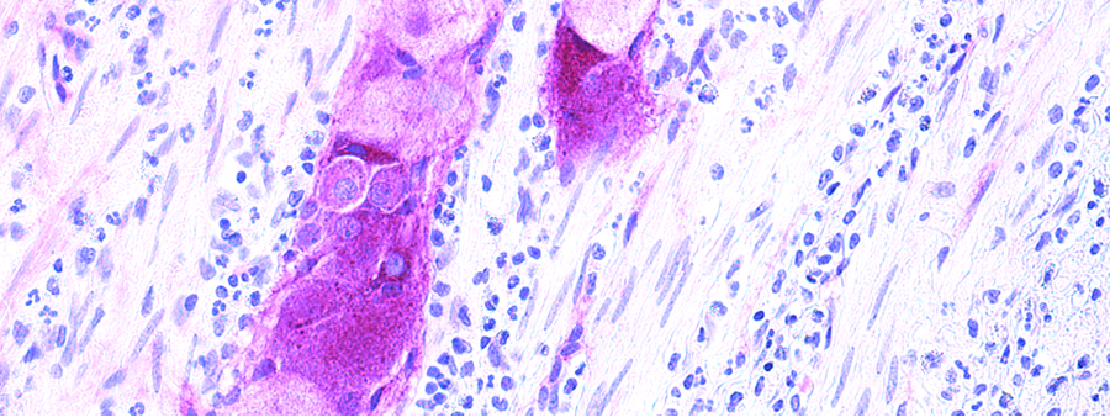Did you miss Grand Challenges in Parkinson’s Disease and Rallying to the Challenge? Don’t worry. We have you covered.
Just over a week ago, the Institute hosted nearly 300 scientists, physicians and people with Parkinson’s, who spent two days intensely focused on the disease’s non-motor symptoms, a diverse group of problems that play a major role in quality of life and provide important clues for better understanding a condition that affects more than seven million people worldwide.
Here are the big takeaways:
Non-motor symptoms provide a unique window into the underpinnings of a complicated and often mystifying disease.
As an example, let’s take a look at two major non-motor symptoms of Parkinson’s — gastrointestinal issues and loss (or reduction in) sense of smell.
Both the nose and the gut are exposed to external influences that may cause inflammation, which scientists believe may then lead to critical changes that trigger neurodegeneration if left unchecked (read more about what scientists think is going on behind the scenes here).
It’s important to remember that loss of sense of smell and gastrointestinal issues, such as constipation, don’t necessarily point to Parkinson’s (there are many, many reasons why these things can happen on their own). But, when combined with other symptoms and factors, they may be a powerful indicator of disease risk. At the same time, they help scientists understand what’s going on in the disease at a basic level, and could open new avenues for slowing or stopping disease progression.
The same goes for the other non-motor symptoms of the disease — fatigue, cognitive decline, sleep disturbances and many others.
Overall, it’s unlikely that one single thing causes Parkinson’s. Instead, the disease probably results from a combination of factors, including genetic and epigenetic predisposition and exposure to environmental influences (although it is important to remember that a small subset of cases — fewer than 10 percent — are directly caused by a handful of genetic mutations).
Bottom line? The more we know about all of the components of Parkinson’s, the more equipped we are to develop ways to fight it.
Non-motor symptoms have a massive effect on quality of life — sometimes even more than motor symptoms such as tremor.
This was the major takeaway from Rallying to the Challenge, our annual meeting for people with Parkinson’s, advocates and care partners hosted in partnership with The Cure Parkinson’s Trust. In all, participants underscored the great need for urgency in addressing these symptoms.
Specifically, they have suggested the creation of a scale that prioritizes potential therapies for clinical translation based on the needs of the patient community, which would help ensure scientists are in alignment with people with Parkinson’s. In a fitting tribute, Ralliers have suggested that it be called the “Isaacs Scale” in honor of Trust co-founder Tom Isaacs, a passionate and beloved advocate who passed away last year.
Ralliers also:
- Emphasized the importance of clear communication around sensitive issues such as thinking and memory in Parkinson’s
- Explored reframing how fatigue is discussed to ensure that it is clearly differentiated from tiredness
- Discussed the benefits of exercise on non-motor symptoms
- Highlighted the challenges and importance of objectively measuring non-motor symptoms
Working together is the way forward.
Parkinson’s isn’t pulling any punches and neither should we. It’s a complicated, tough disease that can vary greatly from person to person, and we have to tackle it from all sides. It’s also an increasingly pressing problem — by 2030, the number of Parkinson’s cases is expected to double to more than 14 million worldwide.
That’s why events like Grand Challenges in Parkinson’s Disease and Rallying to the Challenge are so valuable — they bring together scientists with different expertise, physicians and people with Parkinson’s, creating a catalyst for new ideas, sparking vital conversations and, importantly, ensuring everyone is on the same page (you can read more about one of these collaborative efforts, Linked Clinical Trials, here).
To stay up to date on next year’s Grand Challenges in Parkinson’s Disease symposium and Rallying to the Challenge meeting, please visit grandchallengesinpd.org or follow us on Facebook at facebook.com/grandchallengesinpd. You can also watch our Facebook Live panel discussion on non-motor symptoms here.
News from Grand Challenges in Parkinson’s Disease and Rallying to the Challenge
Award honors scientists who strive to improve the lives of people with Parkinson’s
Internationally recognized Parkinson’s expert wins Jay Van Andel Award
For more information on non-motor symptoms, check out the links below:
Revealing the “hidden face” of Parkinson’s: A Q&A with Professor K. Ray Chaudhuri
From the nose to the gut: Understanding the non-motor symptoms of Parkinson’s disease
VAI Whiteboard Series: Non-Motor Symptoms in Parkinson’s (video)
